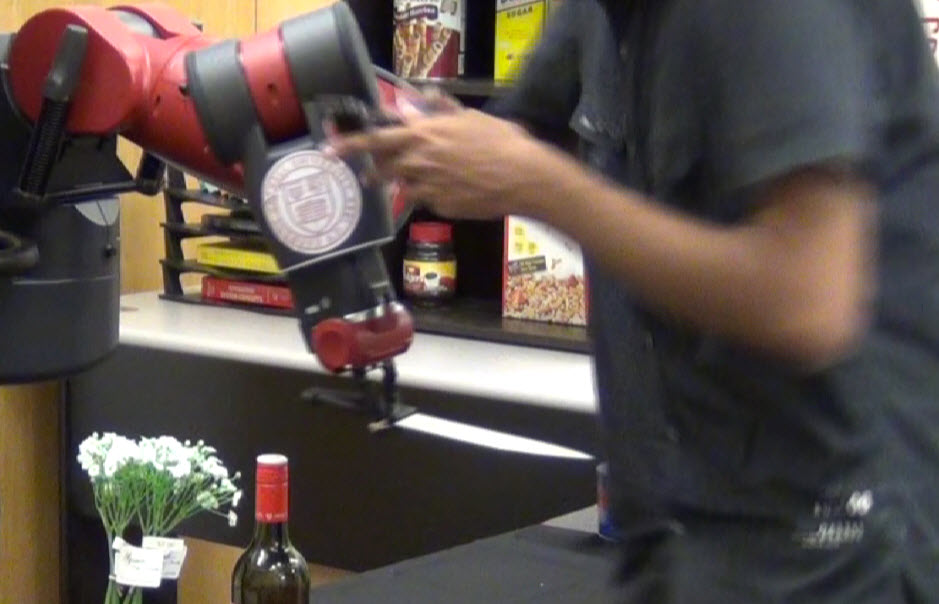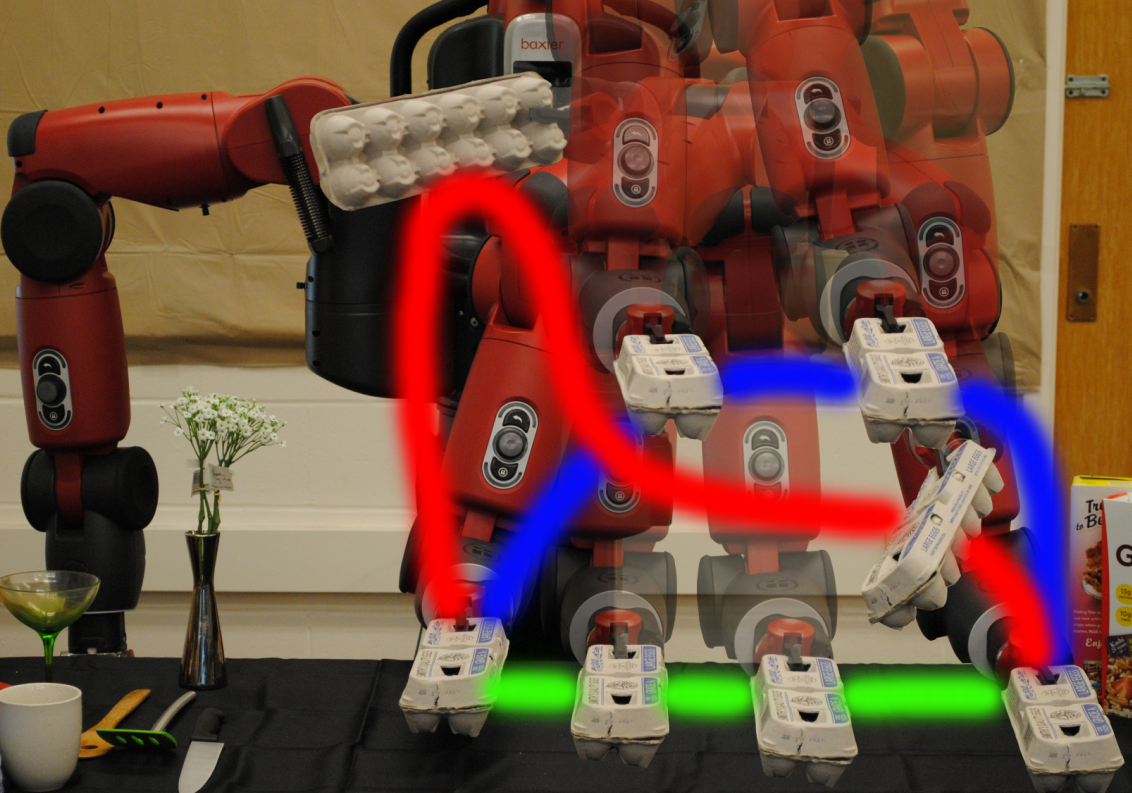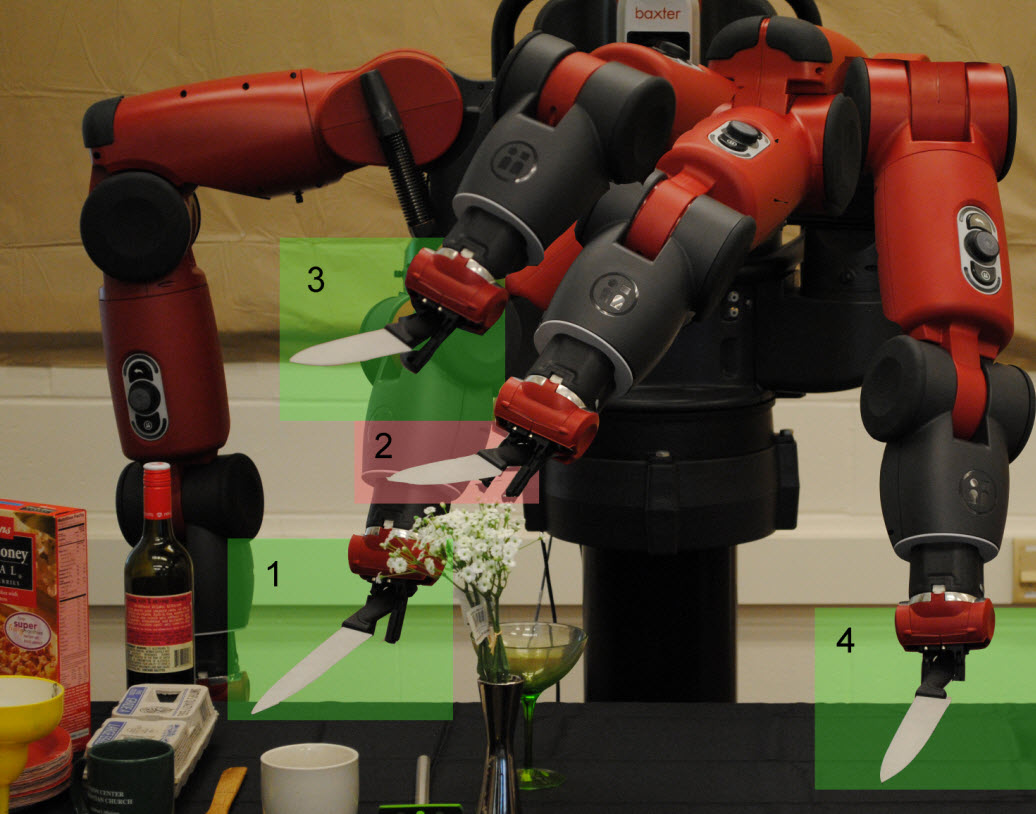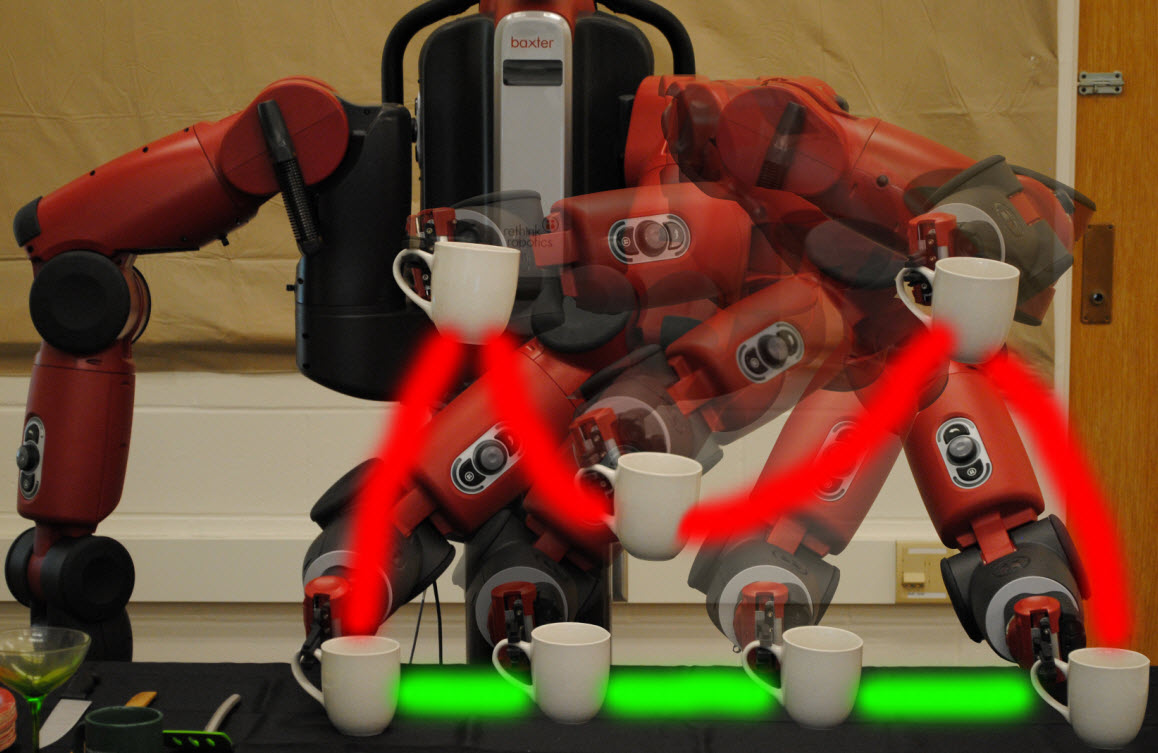Attention, Kmart shoppers: there’s a robot checker open in aisle six
November 5, 2013 by Amara D. Angelica

Bad robot! Dodging a knife, heroic Cornell robotics researcher teaches Baxter how to be a checkout clerk (without stabbing the paying customers) by moving the knife to a safe distance.
Wow, it’s happening already. Cornell robotics researchers are now teaching robots complex tasks such as performing as grocery-store checkout clerks.
Can robot butlers (as in Robot & Frank) be far behind?
This is a big step beyond what Cornell researchers in Prof. Ashutosh Saxena’s lab were teaching their smart robots the last time we (virtually) visited the lab in May.
We saw then how a robot could predict a human’s action and likely trajectory (a “heat map”), such as opening a refrigerator in anticipation of a human’s need for help: putting a dish into the fridge.
How to train a robot as a grocery checkout clerk
Now the robot’s tasks have become more complex and nuanced. The Cornell researchers set out to program complex mobile manipulator robots, like Willow Garage PR2 and Rethink Robotics Baxter. These robots have arms with high degrees of freedom, enabling them to perform complex household chores or assembly-line tasks.
But that high level of complexity also creates a gnarly challenge: how do we enable a general user to train the robot’s multi-arm movements for different environments, tasks, and user preferences, and with movements that are valid from a geometric standpoint (feasible and obstacle-free)?
The Cornell researches developed a novel solution: “The human user does not need to demonstrate optimal trajectories as training data, but merely needs to iteratively provide trajectories that slightly improve over the trajectory currently proposed by the system.
“We argue that this co-active preference feedback can be more easily elicited from the user than demonstrations of optimal trajectories, which are often challenging and non-intuitive to provide on high degrees of freedom manipulators.”
Some examples of their new robots during training:

Baxter checkout robot dazzles with fancy egg-carton moves

Oops! — Baxter holds a knife too close to the flowers (“Cleanup, aisle six”)

OK, who gets the seven cups of Quad Grande, Non Fat, Extra Hot Caramel Macchiato Upside Down?
The researchers will present a paper [1] on their impressive research at NIPS 2013.
OK, fine. Now when can I get one of those robot butlers?
Previous virtual visits by KurzweilAI to the Cornell Robot Learning Lab
Teaching a robot to anticipate human actions
A robot that learns how to tidy up after you
Getting ‘hallucinating’ robots to arrange your room for you
(Image credits: Cornell Robot Learning Lab)